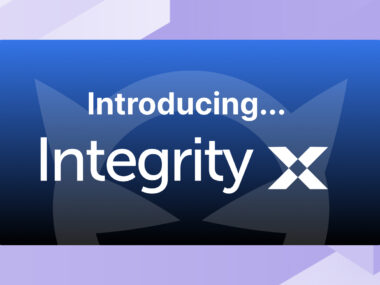Gartner Catalyst 2019: Forest Rangers, Cost-Driven Cloud, & Other Takeaways
BlueCat’s round up of significant topics (especially cloud-related) that dominated Gartner’s flagship tech conference.

Gartner’s annual Catalyst conference kicked off last month. After four days, 3000 attendees, 17k cups of coffee, and a brilliant Mindy Cancila keynote later, it was over just like that.
For those who missed the conference, or perhaps are feeling nostalgic already, these are some of the major recurring cloud-related messages I picked up.
“If we think these technologies are coming in the future, were kidding ourselves. They’re here today.”
—@mcancila from @Gartner_inc as she wraps up the #GartnerCAT conference. pic.x.com/ok08iy0Ljl
— Dana Iskoldski (@danaiskoldski) August 15, 2019
Hybrid and multi-cloud environments = inevitable
An informal poll at one analyst’s session showed about half of attendees’ organizations were operating on two cloud platforms or more. That should come as no surprise. Each cloud provider offers something unique.
For example, Google Cloud Platform (GCP) has a really well-built AI/Machine Learning platform. Azure is the best choice for Office 365. Then there’s Amazon Web Services (AWS) with an endless menu of additional services. The chances your organization will stick with only one are slim, and don’t even think about minimizing complexity by going cloud-only.
What does that mean? According to Alan Waite and Marco Meinardi, it means every organization will need a different set of integrations and ways to manage all these clouds. Why? To see who’s on them, and what they’re doing. To understand what’s being used, what isn’t, and why. And, if needed, to enable resources in one place to communicate with resources in another.
“Everybody underestimates how hard [cloud is] going to be. That doesn’t mean you shouldn’t do anything.”
— @Alan_D_Waite from @Gartner_inc at #GartnerCAT pic.x.com/KSoWgDW4yj
— Dana Iskoldski (@danaiskoldski) August 13, 2019
Forest rangers are the new fence builders
While some organizations have taken to auditing expenses on their corporate cards to uncover incidents of shadow IT (unaccounted-for compute or software), this isn’t a long-term solution.
Kyle Hilgendorf made this analogy: if IT-sanctioned network activity is a fortress in the woods, users will naturally be curious to go outside it. Maybe there’s value to be found out there, after all.
“You can’t just let [cloud excellence] happen organically.”
— @kylehilgendorf for @cloudpundit from @Gartner_inc at #GartnerCAT pic.x.com/ufHhMbYp8T
— Dana Iskoldski (@danaiskoldski) August 14, 2019
He said that the chances IT is able to build fences good enough to keep employees from venturing out into the unknown are slim. Instead, he suggests for IT to think of itself as a forest ranger group, which instead helps employees venture out into the technological woods with the right safeguards and equipment when they choose to do so.
This can take the form of IT acting as a broker for better cloud prices to avoid dangerously high bills, or helping employees access certain cloud resources so that account governance ultimately stays with IT. It can mean that IT embeds itself within business units, to better understand and respond to what users need.
Don’t pick cloud to save on costs
A key theme in both IT and this conference was how to do more with less. This is necessary, given that one Gartner prediction from 2016 estimated that CIOs would soon command smaller budgets than CMOs.
Cloud, however, was often and loudly not recommended as a way to save money. A number of analysts ironically joked that organizations who sign up for cloud are often blindsided by how big their AWS bills can be, for example. The point they were trying to make is this: governing cloud resource use is difficult. Without giving though to governance, organizations risk sabotaging the value and efficiency of their investments in it.
In perhaps one of my favourite conference quips, Alan Waite counseled attendees that ‘saving on costs’ is about as good a reason to move to cloud as ‘my CEO decided we should use the cloud’. In his session about whether cloud can actually help organizations save costs, Waite stressed the importance of being purposeful with cloud use, and thorough in governing the resource.
Enterprise IT is its own political ecosystem
In just about every session I attended, presenting analysts, like Patrick Hevesi, Kyle Hilgendorf, Alan Waite, Eric Knipp, and more, appended political caveats to their cloud strategy recommendations. They kept saying:
- “…Assuming you’re politically able to manage it.”
- “…Be sure to obtain executive buy-in.”
- “…Become good at making friends with the rest of your organization.”
It’s important to remember that large organizations don’t just revolve around an IT department, and the takeaway I flew home with was, ‘the technology is the straightforward part. It’s organizing people and skills and politics around it that’s difficult.’
Versatilists are the new specialists
A number of sessions at the conference stressed the value of versatility in Enterprise IT.
When Eric Knipp talked about this, he meant that IT should be a better rounded department, understand how it fits into the organization, and un-silo itself from its stakeholders.
“Abandon Enterprise IT jobs that push you deeper into work with systems of record.”
— @erichknipp of @Gartner_inc at #GartnerCAT pic.x.com/RpY1ESPAYV
— Dana Iskoldski (@danaiskoldski) August 13, 2019
Patrick Hevesi meant this in the sense that Enterprise IT is in need of a growing number of ‘versatilists’ as opposed to specialists. This is a change from the traditional emphasis on people pursuing only esoteric knowledge in a very particular area. According to Hevesi, systems thinkers have an important place within organizations, especially if they happen to have a knack for organizational politics, and a handle on how technology and business unit teams in an enterprise should fit together.
Last thoughts
It’s one thing to read about trends in cloud computing online. It was a completely different experience sitting in on sessions at Gartner Catalyst, and hearing analysts’ stories about how their customers are managing in the face of it.




